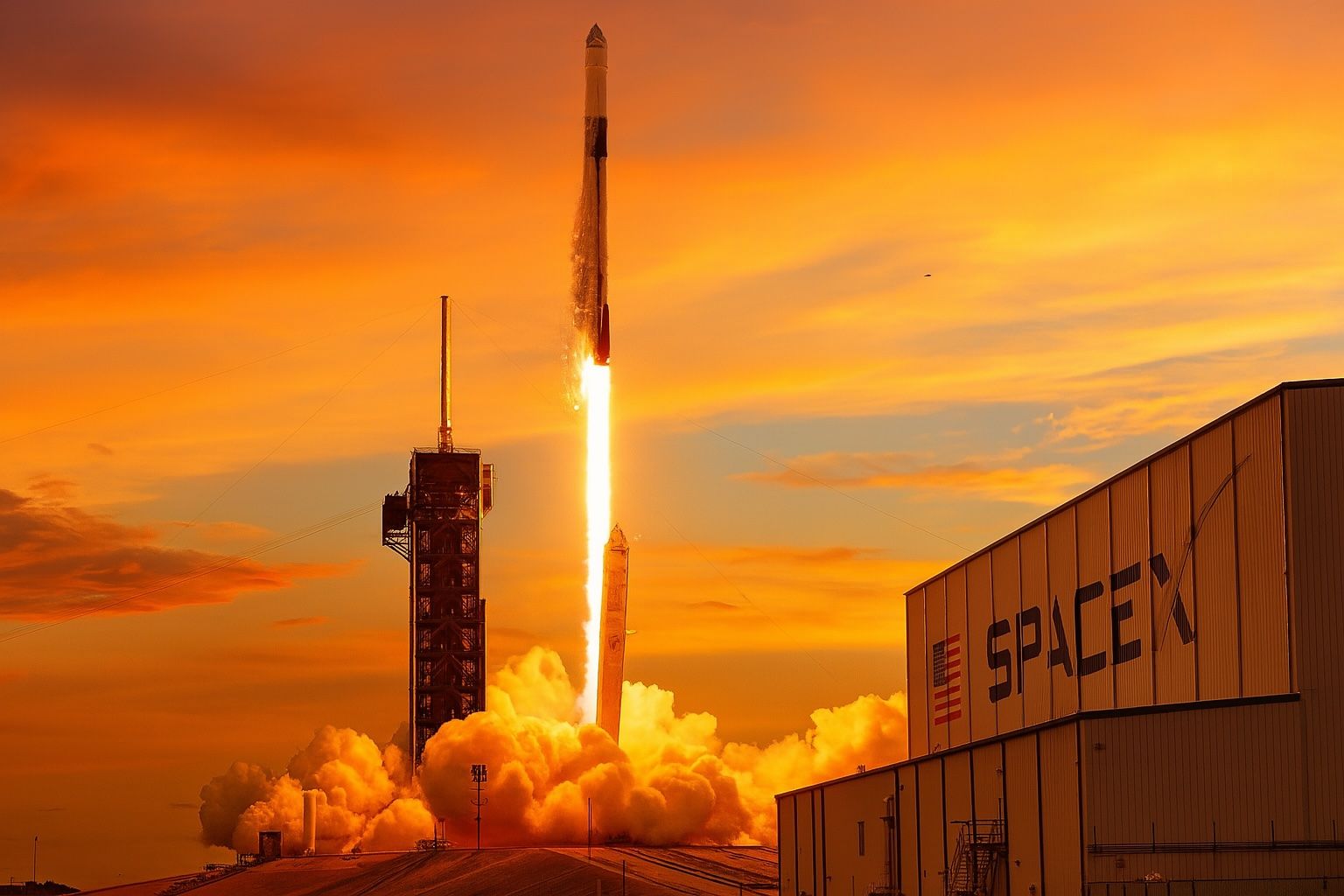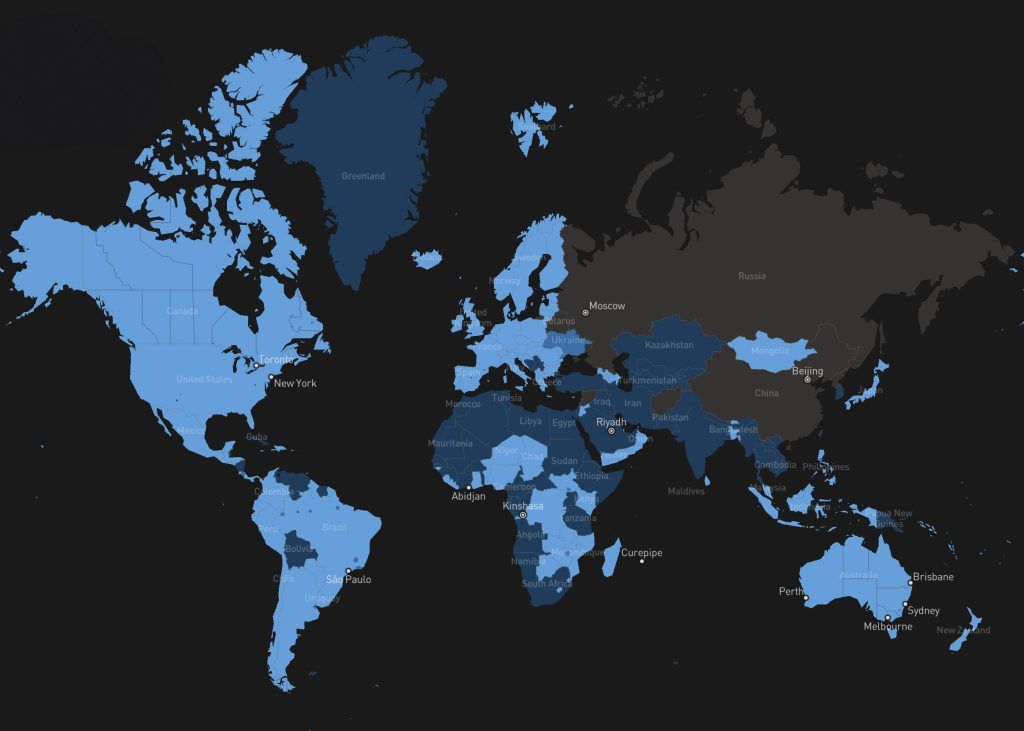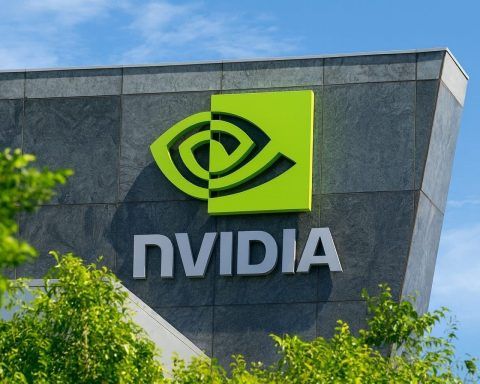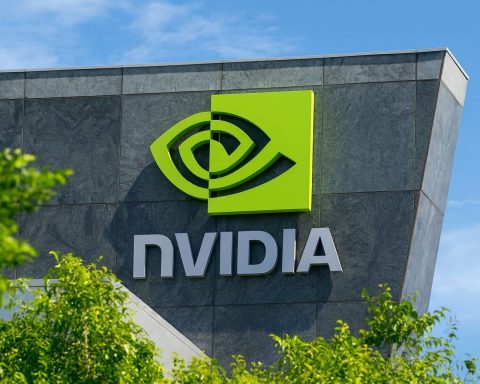- From July 24 to July 25, 2025, Starlink endured one of its largest outages, knocking tens of thousands offline with more than 60,000 outage reports before service largely returned in about 2.5 hours.
- Starlink’s outage was attributed by VP of Engineering Michael Nicolls to a failure of key internal software services that operate the core network, and SpaceX CEO Elon Musk publicly apologized on X.
- Starlink now serves over 6 million users across roughly 140 countries.
- On July 24, 2025, T-Mobile launched T-Satellite, a satellite-to-cell texting service, after a six‑month beta with nearly 2 million participants and up to 30,000 users per day.
- Pricing for T-Satellite: T-Mobile Premium plan customers get it free, other plans add it for $10 per month, while AT&T and Verizon customers can subscribe for $20 per month (promo price $10).
- SpaceX will launch 28 Starlink satellites on a Falcon 9 from Cape Canaveral on July 26, with a liftoff window of 4:28–8:28 a.m. ET, adding to more than 2,300 Starlink satellites launched in the past year.
- The Falcon 9 booster for that mission is B1077, flying for its 22nd time, having previously carried NASA Crew-5, a GPS III satellite, and 17 prior Starlink flights, with a drone-ship recovery planned.
- Elon Musk said Starship Flight 9 is targeted for early August 2025, promising a live technical update before the test and noting the next launch would occur in about three weeks.
- The FAA approved mid‑May modifications to SpaceX’s Boca Chica Starship license for up to 25 launches per year, but no launch until the Flight 8 investigation is closed, and SpaceX has added safety buffers and a new water-deluge and flame-deflector system.
- SpaceX’s Starshield program is under a $1.8 billion contract with the National Reconnaissance Office, with more than 100 Starshield satellites launched in the past year.
In the span of two days (July 24–25, 2025), SpaceX and its Starlink satellite venture experienced a whirlwind of developments. A rare global Starlink outage knocked tens of thousands offline and prompted high-level apologies, even as SpaceX rolled out a groundbreaking satellite-to-cellphone service with T-Mobile. The company also readied a new Starlink satellite launch using a record-breaking reusable rocket, and shared updates on its Starship mega-rocket’s next test flight amid regulatory and political cross-currents. Below is a comprehensive roundup of all the key SpaceX and Starlink news from July 24–25, 2025 – complete with mission details, business moves, tech milestones, and expert insight.
Starlink Suffers Rare Global Outage, Prompting Apologies and Speculation
- Widespread Service Disruption: On July 24, SpaceX’s Starlink satellite internet system was hit by one of its largest-ever outages, caused by an internal software failure [1]. Users across the U.S. and Europe began reporting loss of connectivity around 3 p.m. EDT, and outage trackers logged over 60,000 reports within hours [2]. Starlink acknowledged the problem on its official X (Twitter) account, saying it was “actively implementing a solution,” and service was largely restored after approximately 2.5 hours [3].
- Company & CEO Response: Starlink’s vice president of engineering, Michael Nicolls, confirmed the outage stemmed from “failure of key internal software services that operate the core network.” He apologized for the disruption and vowed the team would “fully root cause this issue and ensure it does not occur again” [4]. SpaceX CEO Elon Musk also took to X to say “Sorry for the outage. SpaceX will remedy [the] root cause to ensure it doesn’t happen again.” [5] The quick public apologies underscored how critical Starlink’s reliability has become, with over 6 million users now depending on it across roughly 140 countries [6].
- Impact and Expert Reactions: The outage, though brief, had significant reach. It even disrupted communications for Ukrainian forces at the front lines, according to officials who said the Starlink blackout affected battlefield connectivity [7]. Industry experts noted the incident was highly unusual for Starlink’s normally resilient network. “This is likely the longest outage ever for Starlink, at least since it became a major service provider,” observed Doug Madory, Director of Internet Analysis at Kentik, adding that such a sweeping interruption is “unusual.” [8] The rare lapse sparked speculation about root causes – from a botched software update to the possibility of a cyberattack – though no evidence of foul play has been confirmed. “I’d speculate this is a bad software update… or a cyberattack,” said Gregory Falco, who leads a space cybersecurity lab at Cornell University, emphasizing that a thorough investigation would reveal the exact trigger [9].
- Starlink’s Sensitivity: The incident highlighted Starlink’s growing importance and the stakes for SpaceX’s most commercially significant venture. The network now spans a constellation of over 8,000 satellites launched since 2020 [10] and serves militaries, transportation companies, and rural communities worldwide. Any extended downtime is more than a minor hiccup; analysts noted that Starlink has become an integral layer of connectivity in many critical applications. (Notably, SpaceX’s classified Starshield division – which provides secure satellite services to U.S. defense and intelligence agencies – was not confirmed to be affected by the outage. Starshield operates under separate contracts worth billions of dollars with the Pentagon [11], underscoring how deeply SpaceX is enmeshed in government missions.) Fortunately, in this case Starlink’s “powerful satellite internet system” bounced back within hours [12] [13], and SpaceX engineers are focused on software fixes to prevent a repeat in the future.
“Zero Dead Zones”: Starlink-T-Mobile Satellite Phone Service Launches Nationwide
Even as the Starlink network was restoring service, SpaceX and T-Mobile achieved a major service expansion – the launch of satellite-to-cellular texting for mobile phones. On July 24, T-Mobile rolled out “T-Satellite,” a new add-on that lets regular cell phones connect directly to SpaceX’s satellites when terrestrial coverage is unavailable [14].
- Service Debut After Beta: The T-Satellite service officially became available across the United States this week, following a six-month beta trial that drew close to 2 million participants [15]. During beta testing, up to 30,000 users per day tried the system, which routes ordinary text messages through a network of Starlink satellites in low Earth orbit [16]. In moments of natural disaster and remote travel, the satellite link proved invaluable – over 1 million emergency texts were sent via Starlink during recent hurricanes, wildfires and floods when cell towers were down [17] [18]. T-Mobile’s goal is to eliminate cellular “dead zones” by leveraging SpaceX’s space infrastructure. More than 650 Starlink satellites are already equipped with the special payloads to serve as “cell towers in space,” using T-Mobile’s PCS mid-band spectrum to talk directly to unmodified 4G phones on the ground [19] [20].
- How It Works and What’s Next: At launch, T-Satellite supports basic text messaging (SMS/MMS) and emergency alerts. If you’re off the grid but can see the sky, your phone can automatically connect through a satellite to send a text – no extra antenna or hardware needed. “No towers nearby? No problem,” wrote T-Mobile’s President of Consumer Group, highlighting the vision that “if you can see the sky, you’re connected.” [21] Later this year, the service will expand to enable popular apps and data. “This is an important step for public safety, but it’s just the beginning. In October, we’ll add app capabilities — think access to maps, weather information, trail guides, social media and more,” T-Mobile noted, also saying it plans to extend coverage beyond the U.S. in the future [22]. Essentially, the companies are aiming for ubiquitous connectivity – “full app connectivity without mobile coverage” anywhere under open sky [23] – by melding Starlink’s satellite blanket with everyday cell service.
- Pricing and Partnerships: T-Satellite is not limited to T-Mobile’s own subscribers. T-Mobile customers on select premium plans get the satellite texting feature included for free, while other T-Mobile plans can add it for $10 per month [24]. Notably, customers of AT&T and Verizon can also tap into the Starlink-backed network – those users can subscribe to T-Satellite for $20/month (currently discounted to $10 as a promotional rate) [25]. This unusual cross-carrier approach reflects the broad appeal of the service, which effectively creates a universal safety net for mobile communications. The move builds on a partnership first announced nearly three years ago between Elon Musk’s SpaceX and T-Mobile [26], and positions Starlink as a key enabler of next-gen connectivity for all major U.S. carriers.
- Competitive and Regulatory Angle: T-Mobile’s leap ahead with SpaceX also shines a light on the competitive landscape. Rivals AT&T and Verizon have been pursuing their own satellite-to-phone capabilities via partners (AST SpaceMobile and others), but those are still in early stages [27]. Meanwhile, SpaceX has been lobbying regulators at the FCC for permission to use additional wireless spectrum (such as the 2 GHz band) to enhance its direct-to-cell offerings [28]. With 657 of its second-generation Starlink satellites already carrying direct-to-cell hardware in orbit [29], SpaceX is rapidly scaling this capability. Industry observers call it a potential game-changer: ubiquitous satellite coverage could fill in rural connectivity gaps and bolster emergency communications nationwide. As one tech outlet summarized SpaceX’s promise, “No more dead zones” [30] may soon become a reality for everyday smartphone users.
Launch Update: New Starlink Mission Set with Record-Breaking Booster Reuse
SpaceX’s Falcon 9 launch cadence shows no signs of slowing down. Over this 48-hour news period, the company was also gearing up for yet another Starlink satellite launch – and making booster reusability history in the process.
- Upcoming Starlink Deployment: SpaceX announced it is preparing a Falcon 9 launch from Cape Canaveral scheduled for the pre-dawn hours of Saturday, July 26 (Eastern time) [31]. The mission will carry 28 Starlink satellites into low-Earth orbit, bolstering the ever-growing constellation that underpins the Starlink internet service [32]. The launch window opens at 4:28 a.m. ET and extends to 8:28 a.m., with live coverage planned via SpaceX and local media [33]. If liftoff occurs on time, this batch will add to the more than 2,300 Starlink satellites SpaceX has already launched in the past year alone [34].
- Falcon 9 Reuse Milestone: Notably, the Falcon 9 first-stage booster assigned to this mission will be flying for the 22nd time [35] – setting a new benchmark for rocket reuse. The particular booster (tail number B1077) has a storied resume: it previously flew NASA’s Crew-5 astronaut mission, a GPS III satellite for the U.S. Space Force, and 17 prior Starlink launches among other flights [36]. SpaceX will attempt to recover it again on a drone ship at sea. Achieving 22 reflights on one orbital-class booster dramatically illustrates SpaceX’s rapid-turnaround, reuse-centric launch model. Just a few years ago, reusing a rocket booster was experimental; now SpaceX has made booster recycling routine, slashing costs and boosting launch frequency. (For context, this same week saw SpaceX’s 500th Falcon 9 launch since the rocket’s debut [37], and the company has been averaging more than one mission per week in 2025.)
- Other Recent Missions: The Starlink deployment from Florida comes on the heels of several other SpaceX launch successes in July. Earlier in the week, on July 22, a Falcon 9 from California’s Vandenberg Space Force Base delivered two powerful O3b mPOWER broadband satellites for SES, a European communications provider [38]. That mission (SpaceX’s 15th for SES) also featured a first-stage landing at sea. And just days before that, SpaceX conducted the first launch for Amazon’s Project Kuiper (lifting prototypes for Amazon’s would-be Starlink competitor) from Cape Canaveral [39] [40]. These back-to-back campaigns underscore SpaceX’s dominance in the commercial launch sector. The company’s ability to rapidly recycle rockets – sometimes within just weeks between flights – has enabled an unprecedented launch tempo, fulfilling contracts for its own Starlink network alongside a diverse manifest of customer payloads.
- Payload Details and Orbits: The 28 Starlink satellites poised for launch on July 26 are expected to join Starlink’s “V2 Mini” generation, equipped with improved antennas and laser inter-satellite links to increase network capacity. They will likely be inserted into a mid-inclination orbit to augment global coverage. SpaceX has been alternating launch sites and inclinations (including polar orbit launches from California) to populate its Gen2 constellation. Each Starlink satellite weighs roughly 800 kg for the V2 Minis, significantly larger than earlier versions, and features an argon Hall thruster for on-orbit maneuvering. With this mission, SpaceX will be well past 4,000 Starlinks launched (the current active fleet is somewhat lower due to deorbiting of older units). The rocket’s payload fairing – also reused from previous flights – will be recovered from the Atlantic after launch, part of SpaceX’s effort to reuse all major components of the system.
Starship Mega-Rocket: Next Test Flight Nears as SpaceX Awaits Regulatory Greenlight
SpaceX’s ambitions aren’t limited to Earth orbit. In south Texas, the company has been preparing for the next test launch of Starship, the gigantic fully-reusable rocket designed for missions to the Moon and Mars. While no Starship launch occurred in this two-day window, there were noteworthy updates about its status and schedule:
- Musk Teases August Test Flight: Elon Musk revealed on July 24 that SpaceX is targeting early August 2025 for the next Starship flight test, pending regulatory approval. Musk posted on X that Starship would be “launching again in ~3 weeks” [41] [42], and promised to host a “live technical update” briefing on Starship’s progress shortly before the flight [43]. This would be the first comprehensive Starship update from Musk in some time, and he indicated it will cover the rocket’s latest design tweaks, engine and stage improvements, and production plans going forward [44]. SpaceX has been upgrading both the Starship vehicle and its launchpad systems after the last two test flights ended in mid-air explosions. Musk’s comments suggest growing confidence that the next attempt is imminent – a sentiment reinforced by an FCC filing which scheduled a Starship test transmission window in early August, aligning with his timeline [45].
- FAA License and Safety Hurdles: Regulatory clearance remains the pacing item for Starship. The U.S. Federal Aviation Administration (FAA) must sign off before SpaceX can launch again from its Starbase facility in Boca Chica, Texas. In mid-May, the FAA approved modifications to SpaceX’s launch license – including permission for up to 25 Starship launches per year from Boca Chica – but explicitly stated that no launch can occur until the investigation into the previous test mishap (Flight 8 in March) is closed and any required safety fixes are implemented [46] [47]. That Flight 8 test saw Starship reach space but ultimately spin out of control and explode during stage separation, prompting a review of debris impacts and flight termination systems. SpaceX submitted its mishap report to the FAA in mid-May [48] and has been working through dozens of corrective actions. Among them, the FAA mandated expanded safety buffers – larger airspace and maritime exclusion zones – for the next launch, especially since SpaceX plans to reuse a previously flown Super Heavy booster on Flight 9 (the first time a Starship booster will fly twice) [49]. This reuse is a major technological step but adds complexity to the safety analysis. SpaceX has reportedly beefed up its pad infrastructure as well, installing a new water deluge and flame deflector system to better protect the ground and rocket at liftoff.
- Ready to Fly – Awaiting the “Go”: By late July, Starship hardware for the next mission (often referred to as “Flight 9”) was stacked and essentially ready. A Starship upper stage (Ship 25 or 26) is expected to be paired with a Super Heavy booster (Booster 9) for the upcoming flight. SpaceX completed a successful static fire test of Booster 9’s engines earlier in the month, and all eyes now turn to the FAA for a launch license update. SpaceX aims to reach orbit (or near-orbital velocity) with this test, a key milestone after previous flights demonstrated the vehicle’s tremendous power but fell short of complete success. If approval is granted in time for an early August launch, it would mark a significant moment for the Starship program – coming roughly 4 months after the last attempt. SpaceX’s long-term plan for Starship includes using it to land NASA astronauts on the Moon by 2027 under the Artemis program, and eventually to enable Musk’s vision of cities on Mars. For now, however, the company must satisfy regulators that Starship can fly without undue risk to public safety or the environment. The FAA, which oversees U.S. commercial launches, has emphasized that SpaceX must meet “rigorous safety, environmental and other licensing requirements” before each flight [50]. In short, Starship’s next giant leap is close – but awaiting a final all-clear.
Business & Regulatory Developments: Contracts, Partnerships, and Politics
Beyond the technical headlines, SpaceX navigated some significant business and political currents during this period:
- Pentagon and Enterprise Contracts: SpaceX’s Starlink/Starshield constellation continues to intertwine with government objectives. While not a brand-new development on July 24–25, it’s worth noting contextually that SpaceX’s classified Starshield program has been expanding under a massive $1.8 billion contract with the U.S. National Reconnaissance Office to build a fleet of spy satellites [51] [52]. In fact, over a hundred secret Starshield satellites have already been launched in the past year as part of a “proliferated” military constellation [53]. This underscores how SpaceX’s technologies are becoming linchpins not only for consumers and enterprises, but also for national security. (Starshield is separate from Starlink’s consumer service, though the systems are interoperable – Starshield satellites can communicate with Starlink to relay data securely [54] [55].) Additionally, SpaceX’s launch services remain in high demand: just this week, the European satellite operator SES reaffirmed SpaceX as its go-to launch provider by flying its newest pair of O3b mPOWER satellites on Falcon 9 [56], and NASA relies exclusively on SpaceX’s crew flights to the ISS at present. Each successful mission further cements SpaceX’s contractual backlog and trust with customers.
- New Telecom Alliances: The partnership with T-Mobile is part of a broader trend of SpaceX striking deals beyond its traditional aerospace realm. In the past year, SpaceX also inked agreements to bring Starlink connectivity to airline fleets (for in-flight Wi-Fi) and signed a contract with major cruise lines to outfit ships with Starlink broadband. No new such deals were announced on July 24–25, but the T-Satellite launch demonstrates SpaceX’s willingness to collaborate with telecom carriers to extend its market. Meanwhile, internationally, Starlink is eyeing new markets – Reuters reported that SpaceX expects to launch Starlink service in Vietnam by Q4 2025 [57], after expanding to dozens of countries across Asia, Africa, and Latin America over the past year. As regulatory approvals come through, SpaceX has been quick to activate service – it added 42 new countries/markets in just the last 12 months [58]. This global push is rapidly growing Starlink’s subscriber base (now over 6 million users) and generating revenue to fund SpaceX’s ambitious projects.
- Political Crossfire and Contract Security: An unexpected storyline unfolded in U.S. politics that could impact SpaceX’s government business. President Donald Trump – who returned to office in 2025 – had a very public falling-out with Elon Musk earlier in the summer over tax and budget issues. In early June, Musk criticized Trump’s fiscal policy and even launched a new political party, angering his former ally [59] [60]. In the aftermath, the Trump administration ordered a review of SpaceX’s federal contracts, reportedly seeking areas to cut back Musk’s influence [61] [62]. With SpaceX holding roughly $22 billion in NASA and Department of Defense contracts (for missions like lunar landers, launch services, and satellite programs), the stakes were high. However, by late July it became clear that “clipping the wings of a space giant is much more difficult than it seemed” [63] [64]. According to insiders, most SpaceX contracts were deemed critical – from crew transport to the ISS, to national security satellite launches – and could not be easily reassigned or canceled without serious fallout [65] [66]. In a conciliatory statement on July 24, President Trump appeared to soften his stance, saying he “would not destroy Elon’s companies” or yank their federal support, and that he wants Musk’s ventures “to thrive” in the U.S. [67] [68]. Trump specifically denied plans to remove SpaceX’s subsidies or contracts, calling rumors to that effect “not so!” [69]. Musk, for his part, fired back on social media that SpaceX doesn’t rely on any significant “subsidies” – only competitively-won contracts – and argued that shifting those contracts elsewhere would “leave astronauts stranded and taxpayers on the hook for twice as much” [70] [71]. This rare political drama highlighted SpaceX’s leverage: its technology is sufficiently advanced and cost-effective that even an angry President found it hard to penalize the company without harming broader US space goals. In the end, SpaceX’s key deals (such as the NASA Artemis human lunar lander and military launch agreements) remained secure, and the White House’s contract review concluded with no major changes [72] [73]. Still, the episode underscored that SpaceX’s meteoric rise is being watched closely in Washington. As SpaceX grows, it must navigate not just engineering challenges but also the geopolitical and regulatory winds that come with being a space infrastructure heavyweight.
Sources: SpaceX/T-Mobile press releases and official statements; Reuters and Bloomberg news reports; DatacenterDynamics and SpaceNews coverage; Spaceflight Now mission updates; Starlink and FAA filings [74] [75] [76] [77] [78] [79]. All information is up to date as of July 25, 2025.
References
1. www.reuters.com, 2. www.reuters.com, 3. www.datacenterdynamics.com, 4. www.datacenterdynamics.com, 5. www.reuters.com, 6. www.reuters.com, 7. www.datacenterdynamics.com, 8. www.reuters.com, 9. www.reuters.com, 10. www.reuters.com, 11. www.reuters.com, 12. www.reuters.com, 13. www.reuters.com, 14. www.datacenterdynamics.com, 15. www.datacenterdynamics.com, 16. www.datacenterdynamics.com, 17. www.t-mobile.com, 18. www.t-mobile.com, 19. www.t-mobile.com, 20. www.datacenterdynamics.com, 21. www.t-mobile.com, 22. www.t-mobile.com, 23. ts2.tech, 24. www.datacenterdynamics.com, 25. www.datacenterdynamics.com, 26. www.datacenterdynamics.com, 27. www.datacenterdynamics.com, 28. ts2.tech, 29. ts2.tech, 30. ts2.tech, 31. www.clickorlando.com, 32. www.clickorlando.com, 33. www.clickorlando.com, 34. www.starlink.com, 35. www.clickorlando.com, 36. spaceflightnow.com, 37. spaceflightnow.com, 38. www.space.com, 39. spaceflightnow.com, 40. spaceflightnow.com, 41. www.benzinga.com, 42. www.benzinga.com, 43. www.benzinga.com, 44. www.benzinga.com, 45. www.benzinga.com, 46. www.reuters.com, 47. www.reuters.com, 48. www.reuters.com, 49. www.reuters.com, 50. spaceflightnow.com, 51. www.reuters.com, 52. www.reuters.com, 53. www.reuters.com, 54. www.reuters.com, 55. www.reuters.com, 56. spaceflightnow.com, 57. www.reuters.com, 58. www.starlink.com, 59. www.reuters.com, 60. www.reuters.com, 61. universemagazine.com, 62. universemagazine.com, 63. universemagazine.com, 64. universemagazine.com, 65. universemagazine.com, 66. universemagazine.com, 67. www.reuters.com, 68. www.reuters.com, 69. www.reuters.com, 70. www.reuters.com, 71. www.reuters.com, 72. universemagazine.com, 73. universemagazine.com, 74. www.reuters.com, 75. www.datacenterdynamics.com, 76. www.reuters.com, 77. www.t-mobile.com, 78. www.clickorlando.com, 79. www.reuters.com










